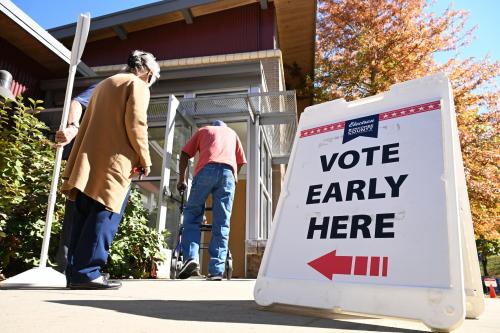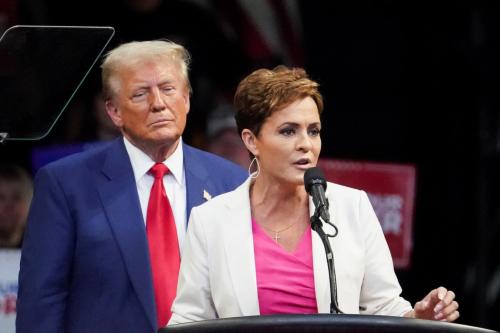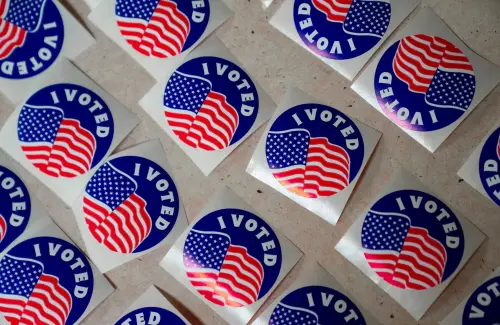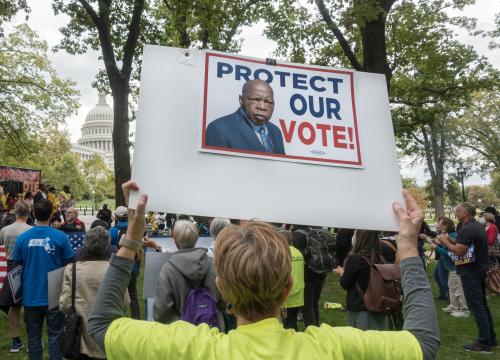In 2016, Donald Trump blocked Hillary Clinton’s attempt to become the first woman elected to the presidency of the United States by eking out narrow victories in the three Midwest Great Lakes battleground states of Pennsylvania, Michigan, and Wisconsin, whose historical preference for Democratic presidential candidates prior to 2016 earned them their designation as the Blue Wall. In 2020, Joe Biden returned the White House to Democratic control by winning back the Blue Wall by the narrowest of margins, while adding similarly narrow victories in Georgia, Arizona, and Nevada for a decisive Electoral College majority. Now the country once again has an opportunity to elect its first female president, but only if Vice President Kamala Harris can win the battle for the Blue Wall as Biden did in 2020.
The results from a recent New York Times/Siena survey of voter sentiment in the three Blue Wall states provided those who have long hoped for such a historic, breakthrough reason to be encouraged. Using the respondents’ history of voting and their degree of enthusiasm for doing so this year to create a snapshot of “likely voters” after President Biden withdrew from the race, the survey showed Vice President Harris with the largest margins of support yet, averaging 50% compared to Trump’s 46% in these three critical states.
This was most dramatically true for those who form the core of the Democratic Party’s coalition—Democratic Party identifiers (95% to three percent), Blacks (81% to 13%), and city residents (70% to 25%). It also showed Vice President Harris with a 22-point margin of support among white college graduates (59% to 37%) and an almost identical level of support among all college graduates (59% to 36%), suggesting her appeal transcends race within that demographic and probably has a lot to do with her gender, given that the greatest number of college graduates in the U.S. are female.
The ticket’s sudden popularity and presence on social media, especially Tik Tok, reflects the degree to which her support skews younger. Those under 45, the new dividing line of American politics, support her by a nine-point margin (52% to 43%), with the most intense support coming from those 29 and younger (56% to 41%). Not surprisingly, she also has a 20-point lead among women (58% to 38%) and a more modest 10-point lead among suburbanites (53% to 43%). These are the key segments of what Ron Brownstein called the Obama “coalition of the ascendent” that many believe is the future majority in American politics.
In addition, so far at least, she has also been able to make even greater inroads among senior citizens than President Joe Biden did in 2020. In this battleground state survey anyway, she currently enjoys a 55% to 42% advantage over Trump among voters 65 and older.
The rise of her popularity in such a short time inevitably leads to questions about whether or not her success is sustainable through the election, so that she can do what no other female candidate for the presidency has ever done. Although it’s impossible to use polling in such a volatile and competitive election year to predict the future, there is one set of data in this battleground survey that suggests she has a better chance than her predecessors of making history.
In comparison to her male opponent, Vice President Harris has done a better job of convincing voters in the Blue Wall states that she has the character to be president. Two-thirds (65%) of this slice of the electorate think she is intelligent compared to only 56% of likely Blue Wall voters who say that about Trump. Similarly, 53% think she is honest, while only 41% think Trump is. On a personal dimension that has sometimes tripped up female candidates in the past, Harris comes across as having the right temperament to be president in the minds of 55% of those surveyed, whereas only 45% thought this was true of Trump. These relatively more positive feelings toward her personally give her a greater chance to withstand the withering attacks she is sure to face now that the campaign has begun in earnest.
Even currently, among some of the less personal and more abstract ways that voters think about presidential candidates, Vice President Harris shows some vulnerabilities. Only 51% think she can bring about the right kind of change, just four points more than Trump gets in response to this key point of contention in all presidential campaigns. And even though she has talked about her vision for the future nonstop since launching her candidacy, Trump currently scores higher for having a clear vision for the future than she does in this survey—60% compared to her 53%.
So far, however, attacks on her political ideology by Republicans have failed to persuade voters that she is too radical for most Midwest voters to support. Their initial attacks on Harris as “too liberal” has only found credence among a small majority of those segments of the electorate most likely to already support Trump: men (53%), white non-college voters (53%) and residents of small towns/rural areas (56%). By contrast, among groups in the Blue Wall states who have already signaled their support for Vice President Harris, at least a plurality perceives her ideological position as not tilted “too far either way” —women (51%), voters ages 18 to 44 (45%), Blacks (66%), college graduates (50%), city residents (61%), and suburbanites (48%).
Voters in these three key states do resemble the rest of the electorate in America in one important dimension—they are sharply divided on the issues that will determine their vote. For Trump voters and Republican identifiers, the key issues are the economy and immigration. Fewer than 10% of these groups cite abortion or democracy. For Harris voters and Democratic identifiers, the key issues are abortion and democracy; fewer than 10% of those groups cite the economy or immigration. The key to Harris’s victory may well be how well she turns out Democratic loyalists while winning over some independent voters or even Republicans who respond positively to her potentially more bipartisan themes of freedom and opportunity that, in turn, link back to the more specific issues of democracy and abortion surveyed in the New York Times/Siena poll.
It is never easy to be the first to try and accomplish something in American politics, as Vice President Harris well knows from her own career. But the initial reviews of her performance as a candidate for president of the United States suggest she has a clear chance to become the second Black person, and the first woman, ever elected to the office. In the end, the possibility that America will finally shatter the highest political glass ceiling of all will be determined by whether Vice President Harris wins the battle for the Blue Wall between now and November 5.
The Brookings Institution is committed to quality, independence, and impact.
We are supported by a diverse array of funders. In line with our values and policies, each Brookings publication represents the sole views of its author(s).









Commentary
Will the Blue Wall elect the nation’s first woman president?
August 16, 2024